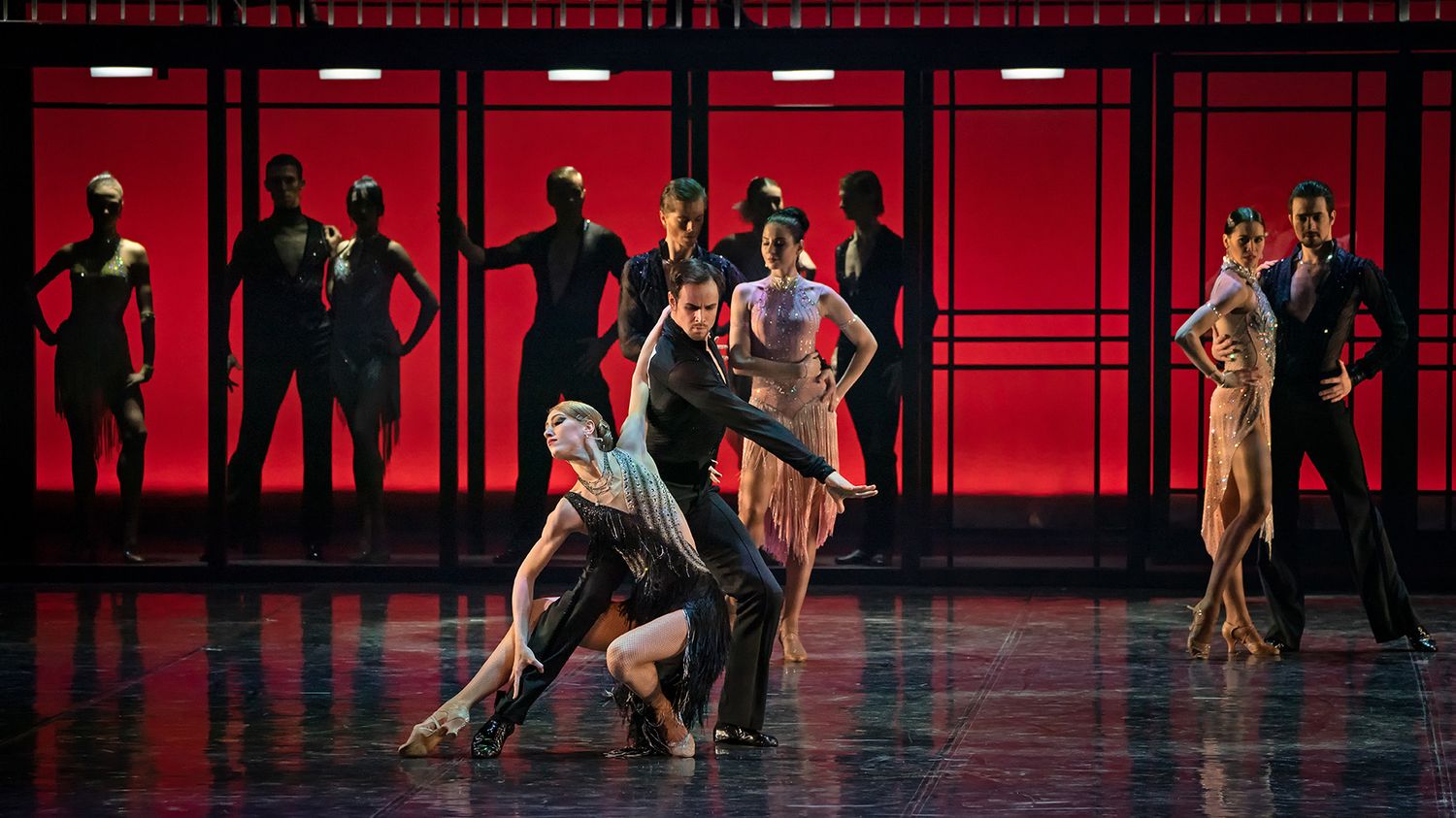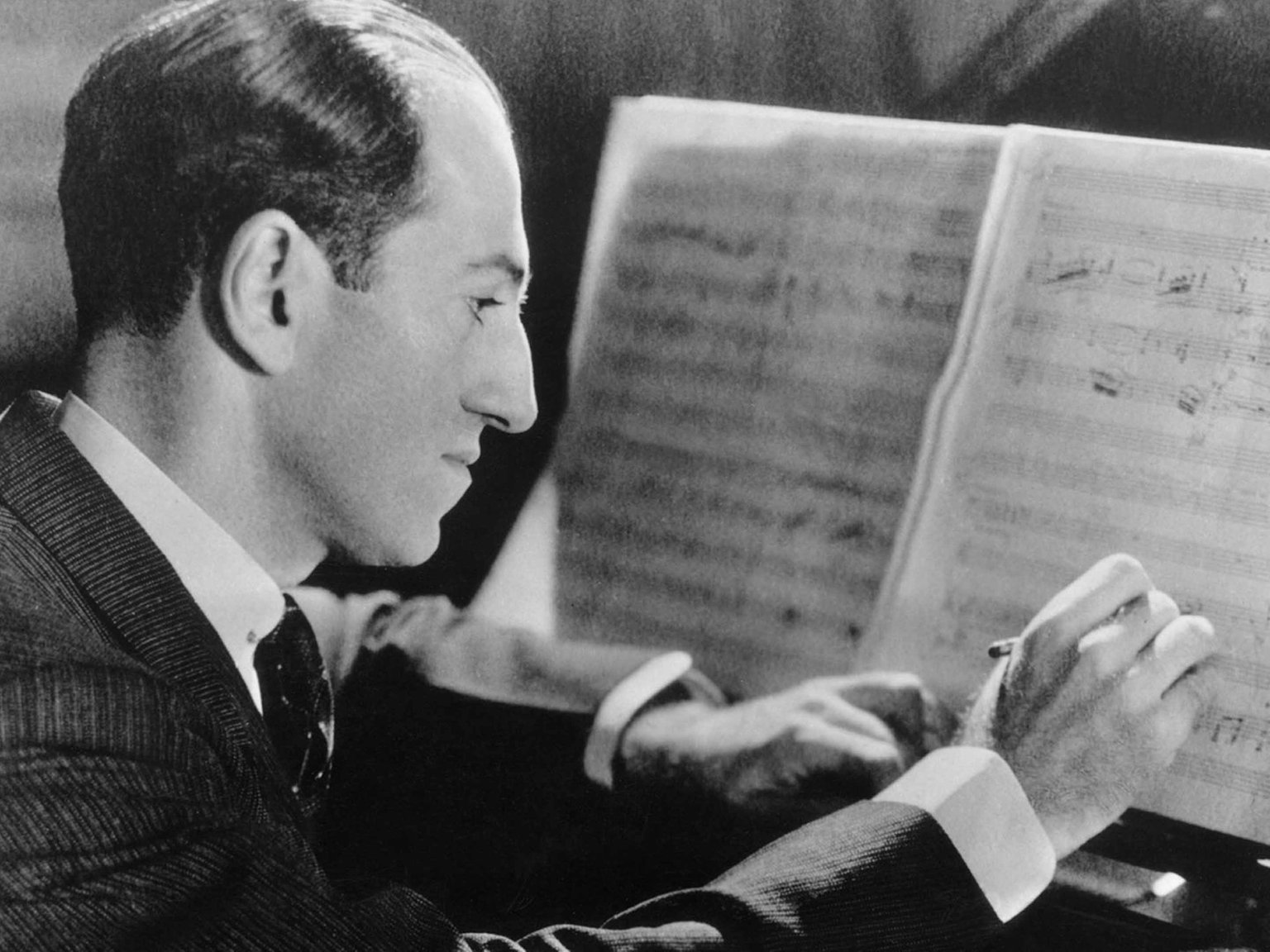Home>Events & Info>Ballet>When Was The New York City Ballet Founded


Ballet
When Was The New York City Ballet Founded
Published: January 10, 2024
Discover the history of the New York City Ballet and learn about its founding. Find out when this iconic ballet company was established and how it has shaped the world of ballet.
(Many of the links in this article redirect to a specific reviewed product. Your purchase of these products through affiliate links helps to generate commission for AudioLover.com, at no extra cost. Learn more)
Table of Contents
Introduction
The New York City Ballet is one of the most prestigious and renowned ballet companies in the world. With a rich history and a commitment to excellence, the company has captivated audiences with its impeccable technique, innovative choreography, and breathtaking performances.
Founded in 1948, the New York City Ballet has become synonymous with artistic brilliance and unparalleled grace. Led by legendary choreographer George Balanchine and dance visionary Lincoln Kirstein, the company quickly rose to prominence, revolutionizing the ballet world with its unique style and approach.
For decades, the New York City Ballet has been a beacon of creativity and artistic expression, pushing the boundaries of traditional ballet and redefining the art form. Its repertoire is a diverse blend of classical and contemporary works, showcasing the incredible talent and versatility of its dancers.
With a commitment to training and nurturing young talent, the New York City Ballet has fostered generations of world-class dancers. Many of its alumni have gone on to achieve international success, further cementing the company’s reputation as a breeding ground for excellence in ballet.
In this article, we will explore the fascinating history of the New York City Ballet, from its early years to its remarkable contributions to the world of ballet. We will delve into the formation of the company, its first performances, notable productions and collaborations, the establishment of its iconic Lincoln Center home, and its continued success and evolution.
Join us as we embark on a journey through time, celebrating the artistry, passion, and enduring legacy of the New York City Ballet.
Early Years
The early years of the New York City Ballet were filled with a sense of ambition and determination. In 1948, two visionaries, choreographer George Balanchine and impresario Lincoln Kirstein, joined forces to create a ballet company that would become a cornerstone of American dance.
George Balanchine, a Russian-born dancer and choreographer, was already well-known for his groundbreaking work with the Ballets Russes and the Ballet Russe de Monte Carlo. His innovative choreography and emphasis on musicality had garnered him a reputation as a trailblazer in the ballet world.
Lincoln Kirstein, an American arts patron, shared Balanchine’s passion for ballet and was eager to establish a premier ballet company in the United States. Together, they set out to create an institution that would elevate American dance to new heights.
In their early years, Balanchine and Kirstein faced numerous challenges. They had to secure funding, find talented dancers, and cultivate an audience for ballet in a country that was still relatively unfamiliar with the art form. However, their perseverance and unwavering commitment to their vision paid off.
In 1948, the company was officially founded as the “Ballet Society.” It began as a small troupe, with only a handful of dancers and limited resources. Despite these limitations, Balanchine and Kirstein showcased their brilliance, presenting innovative and experimental works that challenged traditional ballet norms.
During this time, Balanchine’s artistic vision began to flourish. He developed his hallmark style, characterized by athleticism, musicality, and a sense of speed and energy. His choreography broke away from the conventional narrative structure of ballet and focused on the pure movement of the dancers.
One of the notable early productions was “Orpheus,” which premiered in 1948. This ballet, with music composed by Igor Stravinsky, was a true testament to Balanchine’s artistic prowess. It showcased his ability to blend classical technique with modern sensibilities, captivating audiences with its emotional depth and visual splendor.
Despite their early successes, the Ballet Society faced financial challenges, and in 1949, it was reorganized as the New York City Ballet. This rebranding marked a new chapter in the company’s history, solidifying its commitment to becoming a permanent and influential presence in the dance world.
Through innovation, collaboration, and artistic excellence, the early years of the New York City Ballet laid the foundation for what would become one of the world’s premier ballet companies. With boundless creativity and a commitment to pushing artistic boundaries, Balanchine and Kirstein set the stage for the New York City Ballet’s continued success in the years to come.
Formation of the New York City Ballet
The formation of the New York City Ballet was a monumental moment in the history of ballet in America. It was the result of the collaboration and vision of two extraordinary individuals: choreographer George Balanchine and impresario Lincoln Kirstein.
Balanchine and Kirstein believed that American ballet needed its own distinct identity, separate from the European traditions. They sought to create a company that would showcase American talent and embody the spirit of innovation and artistic expression.
In 1948, the Ballet Society, a precursor to the New York City Ballet, was established. It served as a platform for Balanchine to explore his artistic vision and experiment with new choreographic styles. The Ballet Society’s performances generated a buzz among dance enthusiasts and attracted a growing following.
However, funding remained a pressing issue. To secure financial stability and ensure the company’s long-term future, Balanchine and Kirstein made a pivotal decision: to reshape the Ballet Society into a professional dance company known as the New York City Ballet.
With this transformation, the New York City Ballet became the first ballet company in the United States to have a permanent home. The company was dedicated to nurturing American talent, training dancers in Balanchine’s unique style and providing them with opportunities to shine on stage.
Under Balanchine’s artistic direction, the New York City Ballet garnered acclaim for its technical precision, athleticism, and artistic interpretation. Balanchine’s choreography embraced both classical ballet vocabulary and neoclassical elements, infusing it with his own distinct flair.
Kirstein played a crucial role in shaping the company’s administrative and financial structure, working tirelessly to secure funding, establish connections with donors and patrons, and expand the company’s reach. His dedication allowed the New York City Ballet to grow and flourish, setting a solid foundation for its future success.
One of the defining characteristics of the New York City Ballet was its commitment to collaboration. Balanchine sought out talented musicians, composers, designers, and artists to work alongside the dancers, creating a seamless integration of music, movement, and visual elements. This collaborative approach resulted in groundbreaking productions that pushed the boundaries of the art form.
The formation of the New York City Ballet marked a turning point for ballet in America. It showcased the immense talent and potential within the American dance community and solidified the company’s place as a leading force in the world of ballet. Balanchine and Kirstein’s shared vision and unwavering dedication laid the groundwork for a new era of ballet, one marked by innovation, creativity, and artistic excellence.
First Performance
The New York City Ballet’s first performance marked a momentous occasion in the history of American ballet. On October 11, 1948, at the City Center of Music and Drama (now known as New York City Center), the company took the stage for the very first time.
Titled “Premiere Performance,” the evening consisted of a diverse program that showcased the range and artistry of the newly formed company. The repertoire included works by George Balanchine, as well as other choreographers who were at the forefront of the American dance scene.
One of the highlights of the program was Balanchine’s iconic ballet “Concerto Barocco.” Set to the music of Johann Sebastian Bach, this neoclassical masterpiece showcased the precision and technical prowess of the New York City Ballet dancers. With its intricate formations, intertwining patterns, and exquisite musicality, “Concerto Barocco” left a lasting impression on both the audience and the dance world at large.
The program also featured Balanchine’s “Symphony in C,” a grand and triumphant ballet set to the music of Georges Bizet. This ballet demonstrated Balanchine’s ability to blend classical technique with modern sensibilities, creating a visually stunning and emotionally captivating experience.
In addition to the works of Balanchine, the program included pieces by other notable choreographers of the time, such as Jerome Robbins and Antony Tudor. This diverse repertoire gave the audience a taste of the breadth and depth of American ballet, reaffirming the New York City Ballet’s commitment to showcasing a wide range of artistic voices.
The premiere performance of the New York City Ballet was met with critical acclaim and enthusiastic applause. Audiences were captivated by the artistry, skill, and groundbreaking choreography that filled the stage that evening. It was clear that a new era had dawned in American ballet.
With this first performance, the New York City Ballet established itself as a prominent and influential institution in the dance world. The company’s commitment to artistic excellence and its dedication to pushing the boundaries of traditional ballet were evident in every movement and every step taken.
From that inaugural performance, the New York City Ballet has continued to thrill audiences with its innovation, technical brilliance, and artistic vision. Each performance is a testament to the enduring legacy of the company, a legacy that began with that historic night in 1948 when the stage was set and the dancers brought their dreams to life.
Major Productions and Collaborations
The New York City Ballet has a rich history of creating and collaborating on major productions that have significantly contributed to the world of ballet. Through these productions, the company has pushed the boundaries of the art form, brought new perspectives to classical works, and showcased the talents of its world-class dancers.
One of the most renowned collaborations in the New York City Ballet’s history was with the famed composer Igor Stravinsky. The partnership between Stravinsky and choreographer George Balanchine resulted in groundbreaking ballets that have become iconic in the dance repertoire.
In 1957, they collaborated on “Agon,” a ballet that blended classical ballet technique with modern movements. The avant-garde score, combined with Balanchine’s innovative choreography, created a piece that was both intellectually stimulating and visually captivating. “Agon” remains a testament to the New York City Ballet’s commitment to pushing artistic boundaries.
The New York City Ballet has also been celebrated for its interpretations of classical works such as “Swan Lake,” “The Nutcracker,” and “Romeo and Juliet.” Balanchine’s choreographic vision brought a fresh perspective to these beloved ballets, infusing them with his unique style while staying true to their essence.
Another notable production in the company’s history is the annual staging of George Balanchine’s “The Nutcracker.” This holiday tradition has become a cherished part of the New York City Ballet’s repertoire and a beloved spectacle for audiences of all ages. The dazzling choreography, intricate costumes, and magical sets transport viewers into a world of wonder and imagination.
The New York City Ballet has also fostered collaborations with renowned designers and artists. One notable example is the partnership with renowned fashion designer Valentino Garavani. Valentino created breathtaking costumes for the New York City Ballet’s production of “Bal de Couture,” bringing his expertise in haute couture and elegance to the stage.
In recent years, the New York City Ballet has continued to collaborate with contemporary choreographers, expanding its repertoire with new works that reflect the evolving nature of ballet. The company has worked with a range of choreographers, including Christopher Wheeldon, Justin Peck, and Alexei Ratmansky, among others. These collaborations have brought fresh perspectives and innovative movements to the stage, ensuring that the New York City Ballet remains at the forefront of the dance world.
Through its major productions and collaborations, the New York City Ballet has consistently pushed the boundaries of ballet and enriched the art form. With its commitment to artistic excellence, innovation, and the highest level of technical skill, the company has solidified its place as one of the world’s leading ballet companies.
Establishment of the Lincoln Center Home
The establishment of the Lincoln Center home stands as a significant milestone in the history of the New York City Ballet. In 1964, the company moved to its new permanent residence at the iconic Lincoln Center for the Performing Arts, solidifying its place as a cultural institution at the heart of New York City.
The decision to relocate to the Lincoln Center was driven by two primary motivations: the need for a state-of-the-art performance venue and the desire to create a dedicated space that would house a variety of artistic organizations. This ambitious project aimed to bring together world-class performing arts institutions under one roof, fostering collaboration and elevating the cultural landscape of the city.
The new home of the New York City Ballet at the Lincoln Center was the David H. Koch Theater (formerly known as the New York State Theater). Designed by renowned architect Philip Johnson, the theater was specifically tailored to meet the unique needs of ballet performances, with its expansive stage, excellent acoustics, and comfortable seating that offered unobstructed views from every angle.
With the move to the Lincoln Center, the New York City Ballet gained a prestigious platform that allowed it to attract a wider audience and showcase its extraordinary talent on a grand scale. The company became an integral part of the vibrant cultural scene at the Lincoln Center, alongside other esteemed organizations such as the Metropolitan Opera and the New York Philharmonic.
The Lincoln Center home provided a fertile ground for creativity, collaboration, and artistic growth. The proximity to other arts organizations facilitated interdisciplinary collaboration, enabling the New York City Ballet to engage in innovative projects that combined dance with music, visual arts, and more.
Additionally, the Lincoln Center’s central location and reputation as a cultural hub drew audiences from around the world, solidifying the New York City Ballet’s international acclaim and enabling the company to tour globally, further spreading its influence and expanding its reach.
Over the years, the Lincoln Center home became synonymous with the New York City Ballet’s identity and legacy. It witnessed countless breathtaking performances, iconic ballets, and memorable moments that have shaped the history of the company.
Today, the Lincoln Center continues to be the cherished home of the New York City Ballet, serving as a testament to the company’s commitment to artistic excellence and its enduring legacy. The venue stands as a symbol of the vibrant cultural heritage of New York City and as a beacon for fans, dancers, and artists alike.
Continued Success and Evolution
The New York City Ballet has continued to thrive and evolve, maintaining its status as one of the world’s premier ballet companies. Over the years, it has embraced new artistic endeavors, expanded its repertoire, and attracted a diverse and global audience, ensuring its continued success for generations to come.
Under the leadership of renowned artistic directors such as Jerome Robbins, Peter Martins, and now Jonathan Stafford and Wendy Whelan, the New York City Ballet has remained committed to pushing artistic boundaries, fostering innovation, and nurturing new talent.
The company has expanded its repertoire to include a wide range of works, from classical ballets to contemporary pieces. It embraces diversity in choreographic styles and collaborates with emerging and established choreographers from around the world to create new and exciting ballets.
In recent years, the New York City Ballet has also focused on preserving and revitalizing its classical repertoire, ensuring that iconic ballets such as “Swan Lake,” “The Sleeping Beauty,” and “Giselle” continue to captivate audiences with their timeless beauty and grace.
Moreover, the company has embraced advancements in technology to engage with audiences in innovative ways. It has utilized digital platforms, live-streamed performances, and social media to bring the magic of ballet to a global audience, fostering a sense of connection and accessibility.
Recognizing the importance of outreach and education, the New York City Ballet has also developed extensive educational programs and initiatives aimed at inspiring the next generation of dancers and fostering a deeper appreciation for the art form. Through workshops, collaborations with schools, and community engagement, the company strives to make ballet accessible to all.
The New York City Ballet’s commitment to excellence is evident in the skill and artistry displayed by its dancers, who continue to push the boundaries of their craft. Each dancer’s journey is supported by a dedicated team of ballet masters, coaches, and staff, ensuring that the company maintains the highest standards of technical proficiency and artistic expression.
Throughout its evolution, the New York City Ballet has remained true to its founding principles while embracing the ever-changing landscape of dance. It continues to be a beacon of artistic integrity, showcasing the beauty, athleticism, and emotional depth that ballet has to offer.
Looking to the future, the New York City Ballet remains committed to its mission of fostering creativity, nurturing talent, and captivating audiences with its extraordinary performances. As it embarks on its next chapter, the company will undoubtedly continue to shape and inspire the world of ballet, always seeking to innovate, evolve, and enchant.
Conclusion
The New York City Ballet has left an indelible mark on the world of ballet, captivating audiences with its breathtaking performances, innovative choreography, and commitment to artistic excellence. From its humble beginnings in 1948 to its current status as one of the most prestigious ballet companies in the world, the New York City Ballet has experienced remarkable growth, evolution, and success.
Throughout its history, the company has been at the forefront of ballet, pushing the boundaries of the art form and redefining classical and neoclassical dance. Led by visionary choreographers such as George Balanchine and supported by the dedication of countless dancers, the New York City Ballet has mesmerized audiences with its technical precision, expressive storytelling, and emotional depth.
The establishment of the Lincoln Center home in 1964 marked a pivotal moment for the company, providing a dedicated space for the New York City Ballet to thrive and flourish. It became a cultural institution at the heart of New York City, attracting audiences from around the world and fostering collaborations with renowned artists and designers.
As the New York City Ballet continues to evolve, it remains committed to preserving its classical repertoire while actively embracing new works and emerging choreographic voices. The company’s dedication to education and outreach ensures that ballet remains accessible and inspiring to future generations.
The New York City Ballet’s legacy is not just defined by its breathtaking performances, but by the impact it has had on the ballet world as a whole. It has inspired countless dancers, choreographers, and audiences, leaving an enduring imprint on the art form.
As we reflect on the history and accomplishments of the New York City Ballet, we are reminded of the power of artistic expression, the importance of collaboration, and the ability of dance to transcend cultural boundaries and touch the souls of people around the globe.
With each graceful movement and each awe-inspiring performance, the New York City Ballet continues to uphold its legacy of excellence, reminding us of the boundless beauty and transformative power of ballet. It stands as a testament to the limitless possibilities of human artistry and the enduring spirit of creativity.











